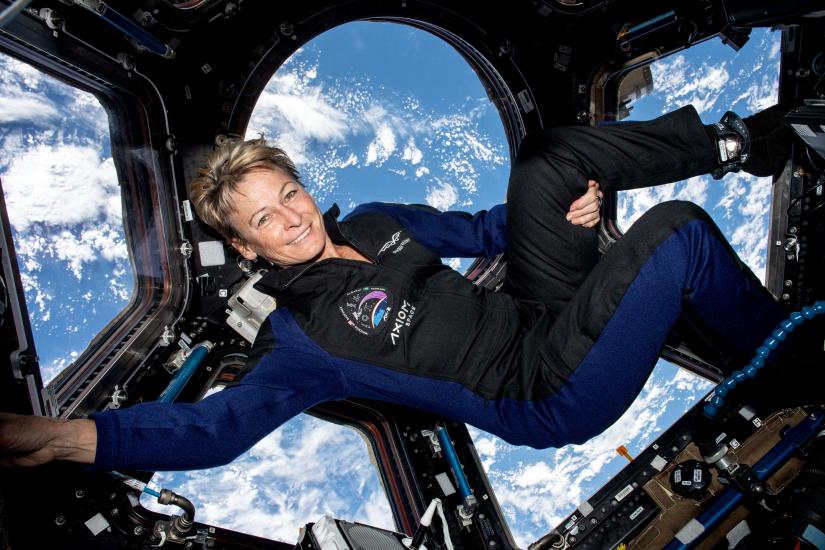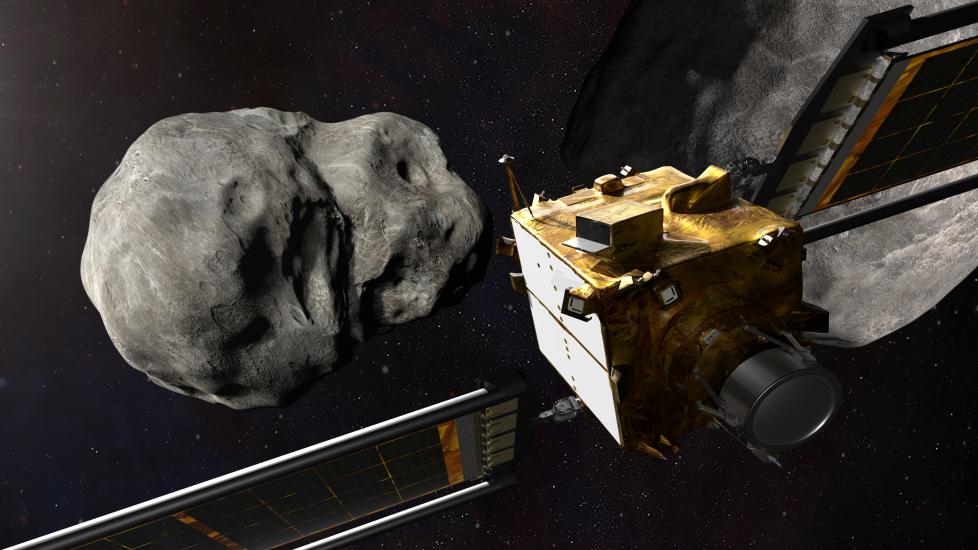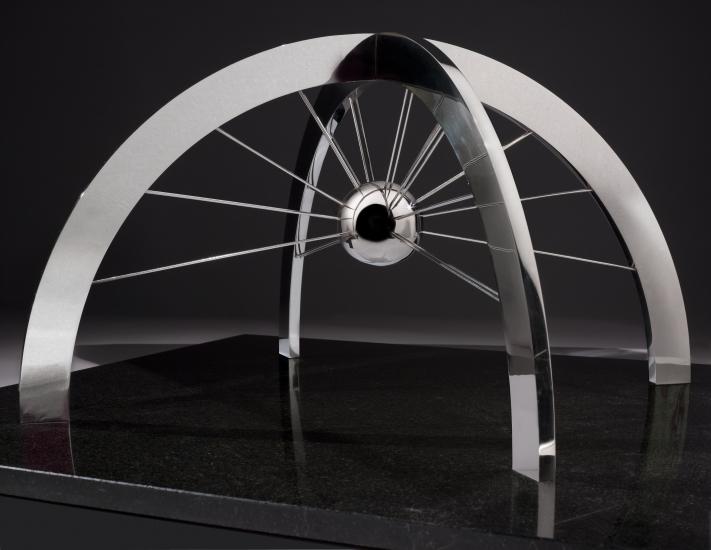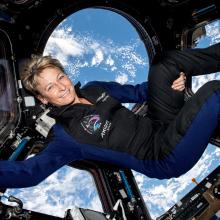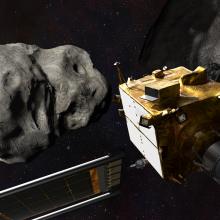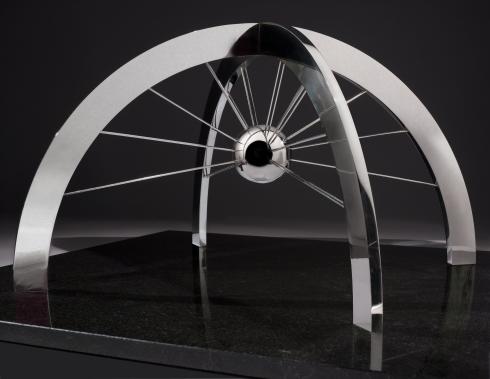
Media Inquiries
Public Inquiries
The Smithsonian’s National Air and Space Museum awards its Michael Collins Trophy annually for Lifetime and Current Achievements. The 2024 recipients are astronaut Peggy Whitson for Lifetime Achievement and the Double Asteroid Redirection Test (DART) Team for Current Achievement; they will receive their awards at a ceremony March 21, 2024, at the museum’s Steven F. Udvar-Hazy Center in Chantilly, Virginia.
Established in 1985, the award recognizes outstanding achievements in the fields of aerospace science and technology and their history. Trophy winners receive a miniature version of “The Web of Space,” a sculpture by artist John Safer. The renaming of the trophy in 2020 (previously the National Air and Space Museum Trophy) recognizes Apollo 11 astronaut Michael Collins’ contributions to aerospace and his service to the museum as director during a critical time in its evolution.
“The 2024 Michael Collins Trophy recipients have made extraordinary impacts on the past, present and future of space exploration,” said Chris Browne, the John and Adrienne Mars Director of the museum. “With 10 spacewalks, 289 consecutive days on one space mission, accumulating 675 days in space, Peggy Whitson is one of the country’s most accomplished scientist astronauts. Just as Dr. Whitson’s achievements have pushed the boundaries of our scientific knowledge, the DART team’s achievements and successful engineering capabilities have advanced humankind and will shape our approach to planetary defense for years to come.”
Lifetime Achievement Recipient—Peggy Whitson
Whitson has led, and continues to lead, a distinguished career of dedication, perseverance and passion in space science. From her humble beginnings on a farm in Iowa to becoming the first woman to command the International Space Station (ISS), Whitson transformed the understanding of what leadership in spaceflight looked like. She received her doctorate in biochemistry from Rice University and used that knowledge to work as a medical researcher at NASA’s Johnson Space Center. She served in several educational and scientific roles at NASA prior to her selection as an astronaut in 1996. Whitson first went to space on Expedition 5 in 2002, and through the spaceflights that followed became the U.S. astronaut with the most days in space. She became the first woman to command the ISS in 2007 and, upon her return to Earth and continued career, was named the first female chief astronaut at NASA, making her the first non-pilot astronaut to serve in that role. She returned to flight status in 2012 and to the ISS on Expedition 50 in 2016. Whitson retired from NASA in 2018 and made the move to commercial spaceflight at Axiom Space as their director of human spaceflight.
Current Achievement Recipient—DART Team
NASA’s DART mission sought to test one method of asteroid deflection using a kinetic impactor spacecraft that would intentionally crash into an asteroid to change its orbit—a scenario that could be used to deflect an asteroid on a collision course with Earth if one were ever discovered. In September 2022, DART accomplished this feat by targeting the asteroid system Didymos and deliberately impacting its secondary body, Dimorphos (which was not a threat to the Earth). To achieve this, the team at the Johns Hopkins Applied Physics Laboratory, which built and operated the DART spacecraft and managed the mission for NASA’s Planetary Defense Coordination Office, had to guide a spacecraft roughly the size of a vending machine to a target 500 feet wide and 7 million miles away while traveling at a speed of four miles per second. The goal was to change the time it took Dimorphos to orbit around Didymos, its orbital period, by at least 73 seconds. Using telescopes on Earth, the mission’s investigation team confirmed that DART’s hypervelocity impact altered Dimorphos’ orbit by 33 minutes, a result 27 times greater than the minimum requirement of 73 seconds.
The results from DART’s kinetic impact demonstration are key to improving future kinetic impactor deflections. These incredible achievements by the DART team represent a giant leap in the capabilities to protect the planet against threats from natural objects beyond the Earth’s atmosphere. The DART mission was a project of the NASA’s Planetary Missions Program Office.
More information about the Michael Collins Trophy and a complete list of past winners are available.
The Michael Collins Trophy event is made possible through the support of The Claude Moore Charitable Foundation, Leonardo US Corp., National Air Traffic Controllers Association, The Ozmen Foundation, Pratt & Whitney: An RTX Business and Thales.
The National Air and Space Museum in Washington, D.C., is located at Sixth Street and Independence Avenue S.W. The Steven F. Udvar-Hazy Center is located in Chantilly, Virginia, near Washington Dulles International Airport.
# # #
